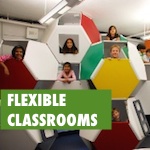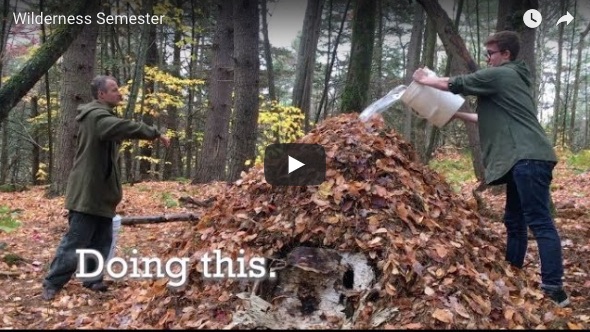Take student learning outside
 Students at Green Mountain Union High School demonstrate learning in Science, Social Studies, Health, and Language Arts over the course of a semester. But for one group of students, there are no barriers between subjects, no bell schedule, and no borders on their classroom. Much of their learning happens out of doors, either in the 200 acres behind the school, on the Long Trail or in other outdoor locations.
Students at Green Mountain Union High School demonstrate learning in Science, Social Studies, Health, and Language Arts over the course of a semester. But for one group of students, there are no barriers between subjects, no bell schedule, and no borders on their classroom. Much of their learning happens out of doors, either in the 200 acres behind the school, on the Long Trail or in other outdoor locations.
Welcome to Wilderness Semester.

Like all Vermont schools, Green Mountain has been working hard to define and implement proficiencies, provide flexible learning opportunities, and personalize learning for all students. In order for this to happen, teachers are learning (and unlearning!) what school can be. Three GM educators saw this as a ripe moment to try something new, something risky, something exciting!
Educators take a risk
The GM Wilderness Semester was born. Well… first, it needed some gestation time. Ally Oswald, Dylan Bate, and Allan Garvin spent last year building an all-encompassing semester-long learning experience set in the Green Mountain Wilderness that would engage students in grades 9-12 in learning across disciplines. Building on experience teaching a Wilderness Literature course that combined language arts and primitive skills content, these educators envisioned a new way to teach that felt more holistic and organic.
Long trail hike annotated with stories and pictures #wildernessemester @JPhillipsVT pic.twitter.com/gHvey4r0Hb
— Ally Oswald (@OswaldAlly) October 13, 2017
Even when they are in a classroom, it doesn’t resemble a traditional learning space in setting or in structure.
Students hear the call
All 9-12 graders were eligible to enroll in the Wilderness Semester, and a diverse cohort emerged to try out this new way of organizing their learning. Let’s be clear, students also had to be willing to take a risk.
A day in the life of Wilderness Semester
While no two days are the same, there is a flow. For example, the morning begins in an opening circle where students read a poem or share a short text and organize themselves for the day of learning to come.
They’re here!! Maine primitive skills school❤️ pic.twitter.com/i4PbOO4OBK
— Ally Oswald (@OswaldAlly) October 26, 2017
This leads to a longer block for content work, such as an analysis of The Way of the Scout by Tom Brown, Jr. or inquiry into Abenaki history. Then they usually head out of doors to do something more hands-on: build debris shelters, fashion traps and weapons like those mentioned in readings, or practice a deeper awareness and connection to their surroundings.
Testing shelters today! Everyone stayed dry #moredebris pic.twitter.com/eIlmWkiKDq
— Ally Oswald (@OswaldAlly) October 24, 2017
After lunch, students work on inquiry projects that cut across disciplines. The afternoon is spent outside learning more about the local ecosystem and their place in it.
The day ends with a Thanksgiving Address where each member of the learning community shares what they are grateful for.
The educators are learning as much as the students
Community is key.
Talking about what it takes to build community in class. Using pictures as prompts made it easy!! Thanks @MichaelEppolito pic.twitter.com/T4w0HX7GEh
— Ally Oswald (@OswaldAlly) October 18, 2017
The community of learners, but also the community of people, plants, animals, and everything on the landscape.
The flexibility of time leads to rich learning. Circling back to lessons learned in the morning in the afternoon is invaluable and deepens the learning. Allowing time to expand was freeing for students and for teachers.
Developing student agency has been huge. Moving students from passive “audience member” participating to engaged learner has taken time, practice and trust.
How could your school build a program like Wilderness Semester?


